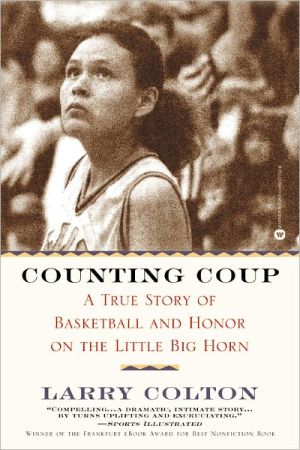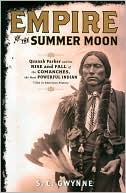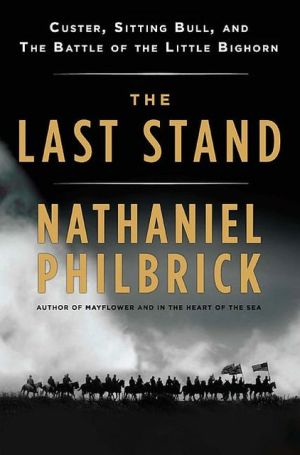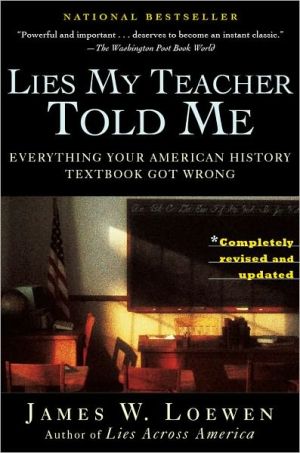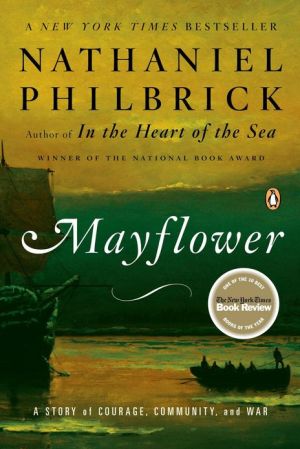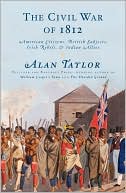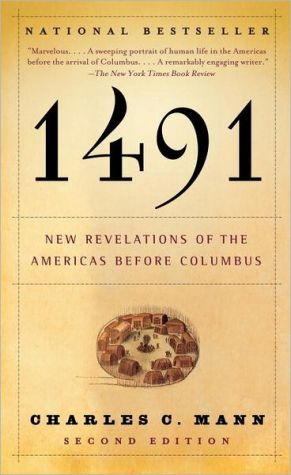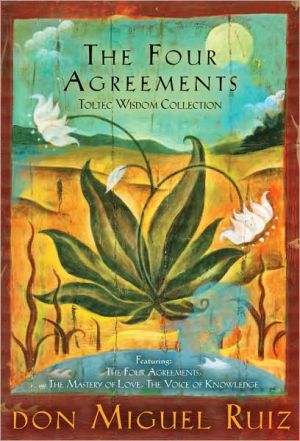Counting Coup: A True Story of Basketball and Honor on the Little Big Horn
" In Native American tradition, "counting coup" meant literally touching one's enemy in battle and living to tell about it. Now it means playing winning hoops and dominating one's opponent. COUNTING COUP is the story of the girls' varsity basketball team of Hardin High School in Crow, Montana. The team is comprised of both Crow Indian and White girls, and is led by Sharon Laforge, a moody, undisciplined, yet talented Native American who hopes to be the first female player from Hardin to earn...
Search in google:
There was a time when "counting coup" meant literally touching one's enemy in battle and living to talk about it. Still part of the Native American tradition, today the phrase means playing winning hoops and dominating one's opponents. Capturing the divisive racism between whites and Native Americans and the hardscrabble existence of a small rural town, COUNTING COUP tells the story of the girls' varsity basketball team at Hardin High School in Crow, Montana. The team--comprised of both Crow Indian and white girls--is led by Sharon Laforge, a moody, undisciplined yet talented Native American girl who's hoping to be the first female player from her high school to earn a basketball scholarship to college. While following Laforge and the Hardin High School girls' basketball team for an entire season, Colton shows how the players deal with success, failure, friendship, rivalries, and racism. Publishers Weekly Colton arrived in Crow, Mont., ready to write a book about a season of boy's high school basketball in the Crow Indian community. But when he saw graceful Sharon Laforge shooting hoops, he was drawn to her athleticism and fascinated by the dichotomy between her on-court focus and her off-court distractedness. To get closer to Laforge, Colton tracks her senior year on the Lady Bulldogs, from the first practice through tournament play. He rides the team bus, assists at practice, wins a spot as an "honorary seventeen-year-old girl," and is eventually adopted into the tribe by Laforge's family. In Laforge, Colton finds a young woman in distress; as she attempts to fulfill her own and her family's hopes, she struggles with the uglier legacies of her community: alcoholism, domestic abuse, abandonment, shortsighted tribal politics, fierce racism and misogyny. In search of a happy ending, Colton follows as Laforge sticks it out with her abusive boyfriend, raises two boys and struggles toward her high school and college degrees. To his credit, Colton effectively employs his position as an outsider to explore the group's culture, and his long-term perspective allows him to convey the drive Laforge needs to survive. However, by centering his focus on one person, he misses opportunities to reflect on larger questions. (In particular, he seems unaware of Ian Frazier's writing about Sharon Big Crow, a basketball star and hopeful who juggled similar pressures on a Lakota reservation in South Dakota.) Nonetheless, Colton's love of basketball and caring insights deliver a sad but ultimately hopeful sort of Hoop Dreams, complete with the struggle for maturity, a community's collective dream and the athletic grace that can momentarily hold the world at bay. Author tour. (Sept.) Copyright 2000 Cahners Business Information.\|
\ \ \ \ Chapter One\ \ \ Preseason\ \ \ Tar paper shacks, abandoned junk heaps in front yards, rutted and littered streetsall the outward signs of people living on the margin. Down the block from where I park, a pack of mangy dogs mosey across the street, pacing themselves in the heat of this August day in Crow Agency, Montana.\ The only sign of energy in the town is the ubiquity of basketball hoops . . . on telephone poles, sides of houses, scrawny trees. These hoops aren't fancy Air Jordan NBA specials purchased at the Rim Rock Mall in Billingsthey have rotting plywood backboards and flimsy rims drooping toward the hardened dirt. Rare remnants of net, shredded by heavy use and the fierce winds that blow off the prairie, hang loosely.\ At the park in the center of towna luckless patch of dried grass with a well-used outdoor basketball surface in the middleNorbert Hill, Paul Little Light, and Clay Dawes, three seniors on the Hardin High varsity, are playing a lazy game of half-court crunch. I know their names because I studied their photos in the showcase in the lobby of the high school gym. These are the guys I've traveled to this remote corner of southeastern Montana to write about, the athletic young men who carry the hopes of the Crow Tribe on their shoulders. In the heat, they move at half speed. I sit down to watch.\ A burgundy Mercury Cougar riding out of the dusty Montana summer eases to the curb, and a young womanI guess her to be seventeengrabs a basketball from the back seat and walks onto the vacant end of the court, dribbling the ball between her legs with a casual ease,her eyes fixed on the guys at the other end. She shyly waves to them, then throws up a halfhearted shot from the free throw line, the ball sailing perfectly through the netless rim, hitting the support pole and bouncing onto the dead grass. Slowly, she retrieves it, picking it up with a tricky little flick of the foot, then returns to the court.\ Tall and slender, she has a quiet beautyhigh cheekbones, dark hair, mahogany eyesyet she is not a celluloid Pocahontas or a black velvet rendition of an Indian princess. Her appeal is subtler. It is the way she moves, a grace, languid, fluid, sexy. All without effort. She seems mysterious, detached.\ From the other end of the court, one of the boys beckons her to come play some two-on-two. He is Paul Little Light, a charming, handsome, crew-cut seventeen-year-old who dreams of Hollywood. He'll be a movie star with a Beamer, a Benz, and a mansion.\ She rolls the ball off the court and walks to the other end, silent, serious. Her teammate will be Norbert, a young man slated to be captain, star player, and class clown. Twenty years earlier his uncle Darrell Hill had also been a star player at Hardin High, good enough to win All-State honors. After the season Uncle Darrell and his brother got into a fight outside a bar in Hardin with two men from another clan with a long-standing feud against the Hill family. When it was all over, the Hill brothers were dead on the sidewalk of stab wounds and the other two men were arrested, although one eventually walked free and the other spent only ten years in jail. Whites took the double murder as further proof that the Crows were their own worst enemy.\ On the first play, the girl dribbles to her left, then zips a no-look pass to a wide-open Norbert, who scores. Little Light, her defender, grins, embarrassed. She shows no expression. Instead, she fakes left, then cuts backdoor, leaving Little Light flatfooted with his Hollywood smile. Norbert's pass is perfect and she scores an easy layup. She still doesn't smile, but she looks at home, as comfortable as the old T-shirt and shorts she wears.\ At this moment, a red Chevy 4x4 with a young Indian man behind the wheel cruises by the park. The girl turns and watches it disappear around the corner, then flips the ball to Little Light and takes off running toward her Cougar, picking up her own ball on the way.\ "Wait," pleads Little Light. "Let's finish the game."\ She doesn't look back or bid them farewell. She just gets in her car and vanishes around the corner.\ My journalistic journey to the Crow Indian Reservation, and my own fascination with sport, date back several decades. Back in the late 1960s, when America was going nuts in the streets, I was a professional baseball player, skilled enough to make it to the major leagues with the Philadelphia Phillies, but stupid enough to blow it one game after I got there, injured in a mindless bar brawl, my dream cut short. I played for the Phillies on a Tuesday.\ But not a day has gone by since then that I haven't thought about the pursuit of fickle athletic glory and our national obsession with sports. It's hard not to: we've got fans in cheese hats, Dennis Rodman on the best-seller list, endorsement fees bigger than school district budgets. I always read the sports news first.\ After I left baseball and took a turn at high school teaching, I wrote a book about pro basketball, as well as basketball stories for a number of magazines. Somehow along the way I became fascinated, then mystified and alarmed, at the plight of young Native American athletes. For reasons that were beyond me, these intelligent, very capable young men seemed to have their lives explode at the time when most young men's lives are just taking off. On the Crow Reservation, where the passion for basketball is legendary and star high school players are the heroes of the tribe and often the best players in Montana, these young athletes invariably finish their high school careers with no hope for a scholarship and no skills for the future.\ Before coming to the rez to explore this phenomenon, I knew enough to understand that this is not just some funky little social trend. This is a whole culture that is backsliding, and has been for a very long time. Why, I wondered, is Native American society failing, leaving its people so hopeless at such an early age?\ The story I've come looking for, however, is not at all the story I will write. The story I find is the girl who just dropped the ball and took off in pursuit of the 4x4.\ At the end of my first week in Montana, I head off for another journey to Crow Agency, this time to check out Crow Fair, a huge tribal powwow. I decide to take the long way from my newly rented duplex in Hardin, a border town on the edge of the rez. The route will take me south on Montana State Highway 313, across the Big Horn River, then east through the heart of the rez. On my bicycle. Out of shape.\ I've never been on a rez before, not even to gamble. I'm not a Native American scholar or New Age wannabe in search of becoming one with the tribe. I've come to Big Horn County only because Indians and sport seem like a good story and an interesting way to spend a year.\ Riding through Hardin, I pass two Indians in front of the Mint Bar, angry, pointing fingers at each other. They interrupt their discourse to glare at me. I speed up.\ Indians, I've been led to believe, are very emotional people who tend to score big from fat government handouts, then blow their windfall money. They are people with rocky family lives and major booze problems. Doesn't everyone know that?\ Odd. That sounds familiar. Though I am, by DNA and upbringing, a WASP, I can identify. As an athlete and a writer, I've scored nice bonuses on occasion, and hey, why not buy a couple of rounds for everybody in the placeonly to find myself months later scrounging cash for rent and a cup of coffee. And perhaps the best thing to be said about my family life is that it's been eventful. I've been married a couple of times, and although I put in a decade doing the single-dad thing seeing two daughters through high school and on to college, I'm still baffled by parenting. As for alcohol, I no longer drink, but back when I did . . . let's just put it this way: I've seen the inside of a drunk tank.\ So, in some ways, I expect to feel right at home here.\ As I head south out of town, the land is flat, the air thick with the smell of fresh-mown alfalfa. I take a deep breath. Riding a bike across the landscape is quickly changing the first impressions I'd gotten a week earlier when I arrived on I-90 from my home in Portland, Oregon. From the Interstate that first day, eastern Montana appeared intimidating, mile after relentless mile of empty spaceno trees, no houses, no Burger Kings. Why had I left my girlfriend and our cozy tree-lined neighborhood for these cutbacks and ravines, this dead dirt and buffalo grass, these low-pinched hills and dry creek beds? But now, from my bicycle seat, I can smell the alfalfa, see the horses, hear the river. A sign reads: "Good Luck Fishermen." What at first seemed hostile land now breathes of life and adventure. It feels good . . . except that after only an hour on the road my butt hurts and it feels like I'm riding in a kiln.\ An empty sugar beet truck barrels past, nearly blowing me into the irrigation ditch next to the road. I keep pumping, past an abandoned homestead, the landscape crawling by, land rich with beets, wheat, barley, and corn, the crops providing the area with its economic lifeline, at least to its white farmers. I wave to a farmer on a tractor. He doesn't wave back.\ After crossing the Big Horn River, I turn onto a county road toward Crow Agency ten miles to the east. The rich farmland that hugs the river now gives way to mile after mile of open range, herds of cattle grazing their way to the slaughterhouse. At first glance, the terrain seems smooth and flat, but soon I encounter slow winding hills that loom like invisible Himalayas. The fact that the temperature on this cloudless prairie day just passed the plutonium meltdown point doesn't help. I pass an Indian mending a fence. He doesn't wave either.\ The closer I ride to Crow Agency, the more garbage and litter I notice next to the road: discarded pop cans, junk food wrappers, disposable diapers, Styrofoam cups. It seems contradictory. I've just read a poignant account of the Indians' kinship and harmony with the earth and nature and how that relationship had been disrupted by the white man and his pollution of the land and the rivers . . . and yet the deeper I ride into the reservation, the uglier the trail of trash. I doubt farmers have thrown it there.\ A car filled with Crow teenagers zooms by and an empty pack of Marlboro Lights sails out the window. "Get a car," the driver yells. In the distance, I see Last Stand Hill.\ Finally, I stop at the top of a rise, and down below is dusty little Crow Agency, the political and cultural center of the reservation, a town with a population of one thousand, give or take a couple dozen on any day. Off to the left is the Big Horn Carpet Mill, a government-subsidized tribal business that has been abandoned and boarded shut since going belly-up in 1974. Prior to its failure it was the largest entrepreneurial venture ever tried on the reservation, but now it is just an ugly hunk of concrete alongside the freeway, an eyesore, a grim testimonial to yet another Crow failure in business.\ Entering town, I stop at the Crow Mercantile to get something to drink. Of the ten customers, I'm the only white. "Do you have any bottled water?" I inquire.\ The clerk doesn't respond.\ I ask again.\ Still no response. She stares at me as if I'm speaking French. I wonder if they only speak Crow in Crow Agency during Crow Fair week. Finally, she turns and points to the rear of the store. "Gatorade's down there," she advises.\ I quench my thirst, then ride south, past the rodeo arena and tribal headquarters, and past the proposed site of Little Big Horn Casino, a project that, depending on whom you ask, is either going to be the salvation of the tribe"it'll bring jobs and revenue"or its ruin"just what they need, another addiction."\ At the Custer Trading Post, I turn onto the road leading up to Custer Battlefield, and fall in line behind the caravan of campers and urban assault vehicles bringing needed tourist revenue into the area. Struggling to catch my breath, I slowly make my way up the incline leading to the entrance, swerving onto the shoulder to avoid a Winnebago from Minnesota.\ Inside the park, I lock my bike and walk up the hallowed hillside to the monument marking the spot where the Indians had massacred General Custer and his troops back in 1876. A warm wind ripples through my T-shirt. Looking at the clusters of white headstones scattered in the undulating meadows of parched mustard and buffalo grass, I wipe away the sweat. I want to know more about the Battle of Little Big Horn and Custer's demise, but on this day and in this heat, I'm not in the mood to take the tour. Maybe on another day when the tourists are thinned out, and the sun is low, and the park rangers aren't looking like Marine DIs in their olive green uniforms and reflector shades. So I head back down the hill, stopping at the Custer Trading Post to buy another drink.\ Sitting on a bench out back, I stare down the hill and across a dirt road at a small brown house, probably built by HUD. It stands alone and weary, and has all the architectural flair of an inflated shoe box. There is something melancholy about it, like the sacred ground that surrounds me. Next to the drab house a teenage girl nonchalantly shoots hoops at a netless rim nailed to a telephone pole beside a rusty abandoned trailer. She is too far away to see her face, but it is impossible to miss the grace and elegance of her movement. When the ball rolls away, she moves to retrieve it, picking it up with a tricky little flick of the foot. It is that same girl.\ From where I sit, I can't even tell if the ball goes through the hoop or not, yet as I sit and watch, transfixed, I forget that I am in the middle of one of the most famous places in American history. There is something enchantingly beautiful in what I'm seeingthe girl's movements, the setting, the arc of the ball, the cavalry gravestones in the background. It all seems to momentarily fit together in some sort of American mosaic, old and new, sport and culture, form and purpose, sorrow and hope.\ Crow Fair is the tribe's five-day powwow held the third week in August, an event the recently fired boys' basketball coach at Hardin High describes as "a place where a bunch of Indians run around drunk and nothing starts on time." Known in Crow as umbasax-bilus, or "where they make noise," the fair is the most anticipated happening of the year on the reservation. For five days, Crow Agency becomes the "Teepee Capital of the World," with spirited competition for prize money in horseracing, rodeo, and tribal dancing. I've never seen so many pickups.\ At the fairgrounds located above the banks of the Little Big Horn River, a river the Indians call the Greasy Grass, I lock up my bike again and start meandering on foot, soaking up the culture: men in full-length headdresses; fancy dancers in beaded dresses; the Nighthawk drummers pounding out tribal rhythms; kids in braided hair riding bareback on pintos; hundreds of teepees with lodge poles extending so high above the covering they resemble giant hourglasses. I feel like a tourist in New York City trying not to let the natives see me gawking up at the skyscrapers. Judging from the dearth of white faces in the crowd, Crow Fair is not big on the social calendar of local farmers and ranchers.\ I check the Crow Fair program and according to the schedule of events it is almost time for the Grand Entry, a colorful parade into the arbor, the circular outdoor arena that serves as the centerpiece of the fair. The Grand Entry, I've been told, is something not to miss, a spectacular display of pageantry and culture that serpentines its way down an adjoining roadway before entering the arbor. I walk to the roadway to get a good view, surprised to find nobody there, no spectators, no participants. I wait ten minutes, and still nobody appears.\ Finally, an elderly woman carrying a folding chair arrives, her face creased with many lines. I imagine her to be full of wisdom and stories. Slowly, she sets her chair down next to the roadway and takes a seat. Dressed in the clothes of the traditional Crow womanlong-sleeved T-shaped cotton dress, wide leather belt, high-top moccasins, head scarf, shawlshe is one of a handful of elderly women on the reservation still clinging to the old tribal customs and trying to maintain the vanishing culture. Whites call these women "blanket squaws."\ "What time does the parade start?" I ask.\ She stares straight ahead toward the east and the direction from which the earliest Crows migrated two centuries earlier. No words come, no acknowledgment of my presence or my question. Just like earlier at Crow Mercantile. I wonder if she even speaks English. For many on the reservation, Crow is still the first language, and to a few, it is still the only language.\ Just as I'm about to turn and walk away, she raises her head and points down the roadway, away from the arbor. "The parade will start," she says, "when you see it coming."\ My patience is no match for hers, so I make my way back to the arbor to wait there for the Grand Entry and the start of the tribal dancing competition. I join the waves of fairgoers circling the perimeter. It is like a carnival midwaycraft booths, food vendors, teenagers. If there is a litter patrol, I don't see it.\ I purchase a slice of fry bread, a puffy pancake-shaped pastry fried in lakes of grease, then sit down to rest and people-watch. Pretty soon I see a familiar facethe mystery girl from the outdoor court in Crow Agency. At her side is a white girl, wearing tight jeans and a dark blue Montana State sweatshirt. She is pretty, if maybe a little trailer park naughty, her reddish brown hair teased skyward. They are sitting on a bench, deep in conversation, oblivious to everyone around them.\ The conversation seems intense. Not angry, just earnest. Intuition, sharpened by raising two daughters and spending tons of hours around high school kids, advises me that they are up to no good, especially when they high-five each other, then hurry off, arm in arm, laughing, two girls on a mission, escorted out of sight by the rhythmic pounding of tribal drums.\ In timeCrow Timethe Grand Entry parades into the arbor. Accompanied by a cacophony of bells, drums, and chanting, and led by a color guard of Crow Vietnam vets, hundreds of dancers dressed in native costumes stream into view. Men, women, children. I have never seen such color, such beadwork, such magnificence. Some of the children are no more than four years old. How do they know the steps?\ I watch the dancers majestically circle the arbor, and I am moved by the beauty and spirit. The parade has indeed started.\ It is twelve miles back to Hardin along the frontage road next to I-90, twelve long miles, not uphill, just long. I pedal hard.\ The land around me is at the center of the enmity between the Indians and whites. From a territory once the size of Pennsylvania, the Crows' land has been reduced by the U.S. government to a mere 2.2 million acres, smaller than Connecticut. And if that isn't bad enough, whites now lease or own 95 percent of the Crows' allotted reservation land, acquiring it for pennies on the dollar from tribal members desperate for a buck. Small wonder the Indians are pissed and suing to get it back, a case that seems destined to idle in the courts forever.\ But it isn't the struggle for the land I'm thinking about as I pedal along. It is that Indian girl. She is in my karass, a term Kurt Vonnegut used in Cat's Cradle to explain recurring chance encounters with a stranger. I've been in town for a couple of days and already I've spotted her three times. She stands out. Maybe it's her athleticism, or maybe it's her good looks. Whatever it is, she's in my karass.\ I will soon learn she is Sharon LaForge, a fifth-generation relative of one of the six Crow scouts that rode with General Custer on his fateful day. And as I sense, she will turn out to be special, a person who will be the focus of my attention during my time on the rez, as well as after I leave. I will see her in school and talk to her daily when she finally allows it. I will yell myself hoarse watching her try to win a scholarship and carry Hardin High to the State Championship. I will become inexorably involved in her life as she struggles against the seemingly endless forces working against her. I will marvel at her bravery, recoil at her bad choices.\ I can't foresee any of that, of course, as I continue to pedal, continue to hurt. I'm not exactly sure how far I've ridden this day, maybe forty miles, maybe 750. For a guy fast approaching his AARP card, it feels like the Tour de France over the Pyrenees. I still have five miles to go. Even worse, a nasty wind has come whipping in off the prairie. It feels as if I'm losing ground. I have to pedal on the downslopes.\ I try to think of anything rather than how badly I hurt or how slowly I'm moving. An eighteen-wheeler rumbles by on the Interstate and I'm reminded of a sad story I heard about two Crow teenagers who decided to play a modern-day version of counting coup. On a rainy night these two boys stood on the edge of I-90, leaning out into the right lane to count coup by slapping the sides of eighteen-wheelers rolling by. These trucks, evidently, were the enemy. But the boys had been drinking and leaned out too far and got hit. They both died instantly.\ With three miles to go and the wind still blowing hot and hard, I spot a beat-to-shit pickup turning onto the frontage road. It is headed in my direction. As it gets closer I see that it is limping along on a flat tire, the torn tread flopping against the pavement. An older Indian couple are inside, and as we pass, they check me out, not just a quick glance but a real eagle-eye stare-down.\ They go a few yards farther down the road, then turn around, nearly driving off the shoulder. I can hear them behind me, closing ground, the sound of their flopping tire getting louder and louder, closer and closer.\ Being new to these parts, I'm a bit nervous. I know it's irrational, but my heart doesn't. I can't outrun them, not even with their wounded tire. I strain into the wind.\ In a few seconds they are right alongside me, almost close enough to touch. I glance over, just as the woman in the passenger seat rolls down her window. We travel side by side for several more yards, then she speaks. "In case you're interested," she says with a toothless smile, "you're going four miles an hour."
\ From Barnes & NobleBookseller's Report\ Counting Coup begins not on a basketball court, but in the tar-paper shack ghetto of Crow Agency, montana. There, everywhere amid the crumbling buildings and junk heaps are basketball hoops. Not N.B.A. fiber-glass-backed specials; tattered plywood and rope improvisations, netless circles rotting slowly under the August sun. The story that Larry Colton paints across this landscape has not been televised prime time, if it has been televised at all. Its heroes are girls' varsity basketball team of Harden High School in Crow. Some of them are white and some of them, native Americans, but all of their faces carry the toughness bred in a poor rural community beset with racism, alcoholism, and violence. This is a powerful, ultimately inspiring book; its profile of Sharon Lafarge, one of the Hardin ladies, exquisite.\ \ \ \ \ Publishers Weekly - Publisher's Weekly\ Colton arrived in Crow, Mont., ready to write a book about a season of boy's high school basketball in the Crow Indian community. But when he saw graceful Sharon Laforge shooting hoops, he was drawn to her athleticism and fascinated by the dichotomy between her on-court focus and her off-court distractedness. To get closer to Laforge, Colton tracks her senior year on the Lady Bulldogs, from the first practice through tournament play. He rides the team bus, assists at practice, wins a spot as an "honorary seventeen-year-old girl," and is eventually adopted into the tribe by Laforge's family. In Laforge, Colton finds a young woman in distress; as she attempts to fulfill her own and her family's hopes, she struggles with the uglier legacies of her community: alcoholism, domestic abuse, abandonment, shortsighted tribal politics, fierce racism and misogyny. In search of a happy ending, Colton follows as Laforge sticks it out with her abusive boyfriend, raises two boys and struggles toward her high school and college degrees. To his credit, Colton effectively employs his position as an outsider to explore the group's culture, and his long-term perspective allows him to convey the drive Laforge needs to survive. However, by centering his focus on one person, he misses opportunities to reflect on larger questions. (In particular, he seems unaware of Ian Frazier's writing about Sharon Big Crow, a basketball star and hopeful who juggled similar pressures on a Lakota reservation in South Dakota.) Nonetheless, Colton's love of basketball and caring insights deliver a sad but ultimately hopeful sort of Hoop Dreams, complete with the struggle for maturity, a community's collective dream and the athletic grace that can momentarily hold the world at bay. Author tour. (Sept.) Copyright 2000 Cahners Business Information.\|\ \ \ VOYAThe author, an ex-professional baseball player and a regular contributor to Sports Illustrated, visited an Indian community in Montana intending to write a feature about its boys' basketball program. When he happened upon female wonder Sharon LaForge, the Native American star of the girls' team, he found a better story. The book follows LaForge and her teammates from preseason workouts to a tumultuous postseason as they aimed for their first-ever state championship. Offering far more than a blow-by-blow description of ball games, although that portion is written with breathtaking excitement, Colton becomes part of the community and delves into the teammates' personal lives, discovering several layers of family, racial, and societal pressures. LaForge's teammates resent her preferential treatment by the coach, the Indian girls often side together against the white girls, and LaForge must deal with painful injuries, an alcoholic mother, an absentee father, an abusive boyfriend, and the manic aunt who raises her. The reader shares the author's exasperation at some of the awful life decisions LaForge makes, many related to the Crow traditions she embraces. In the end, the story is not about whether the team goes all the way but about how people deal with what life has given them with grit and determination. A peek at the whole team five years later reveals some real surprises. Readers, male and female, interested in a snapshot of modern Native culture, the normal stresses of high school, or the travails and triumphs of an underdog sports team will love this fascinating, beautifully written book. VOYA CODES: 5Q 3P S A/YA (Hard to imagine it being any better written; Will appeal withpushing; Senior High, defined as grades 10 to 12; Adult and Young Adult). 2000, Warner, 420p, $24.95. Ages 16 to Adult. Reviewer: Kevin Beach SOURCE: VOYA, August 2001 (Vol. 24, No. 3)\ \ \ \ \ Library JournalSometimes a book surprises a reader, sneaking up on him. That is just what happened with Colton s new work. This is a great book! It s about women s sports; it is about high school kids; it s about racial divisions between whites and Indians. Colton spent a year with the girls varsity basketball ream at Hardin High School in Crow, MT. Crow is a barren town in eastern Montana, close by the Crow Indian Reservation, that lives for high school basketball. Colton, a former major league baseball player, was taken with the basketball team s drive to gain a state championship for the first time and focused on a Crow girl who hoped to be the first girl from her high school to earn a basketball scholarship to college. Colton deals well with the racial division between the white girls and the Crow members of the team. In spending a year with the team, the author sees all the highs and lows (and there are many of both) in the ultimately unsuccessful quest for the state championship. This microcosm of high school athletics is highly recommended for all public and high school libraries. William Scheeren, Hempfield Area H.S. Lib., Greensburg, PA Copyright 2000 Cahners Business Information.\ \ \ \ \ Ann ColletteTo "count coup," especially by touching one's enemy on the chest in battle, was considered the bravest act a young Plains Indian warrior could perform. Fascinated with Native American athletes, the author, a former professional baseball player, decided to spend time at the Crow Indian Reservation in southeastern Montana exploring why Native American teen-age boys renowned for their basketball prowess so rarely live up to their potential. Instead of boys' teams, though, three chance encounters with seventeen-year-old Sharon LaForge, co-captain of her high school basketball team, led Colton to turn his attention to Hardin High's Lady Bulldogs. Racism was only one of the factors that undermined the team. For all their passionate support of the Lady Bulldogs, parents, often alcoholic and, for the most part, living in terrible poverty, exercised little control over their children, with no discipline off court and no curfew. In a deceptively breezy, almost conversational prose style, Colton, who weaves his story into that of Sharon's, covers, in some very exciting writing, the team's rise and fall as it makes it all the way to the state championship.\ \ \ \ \ Kirkus ReviewsThe social dilemmas faced by present-day Native Americans are revealed in this journalistic look at a high school girls' basketball team in Crow, Montana.\ \
